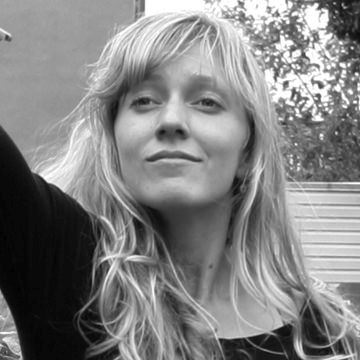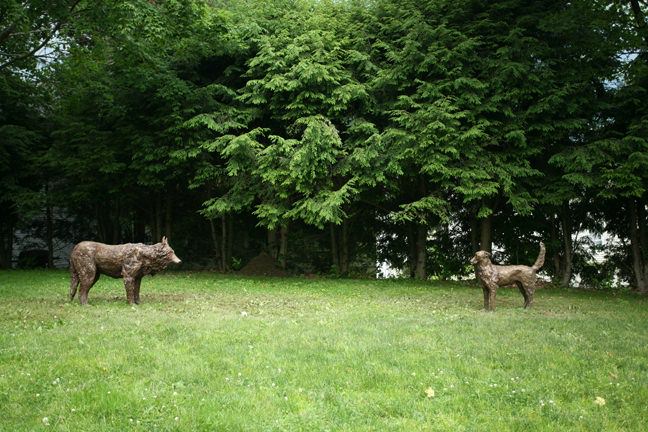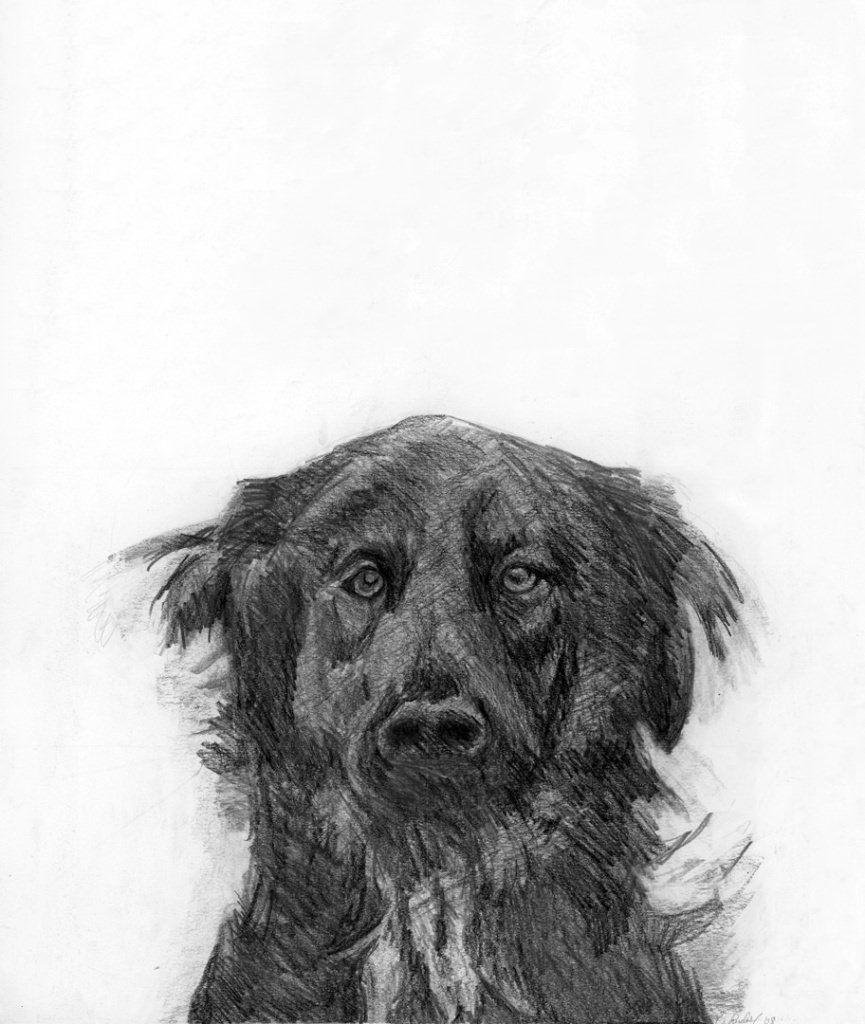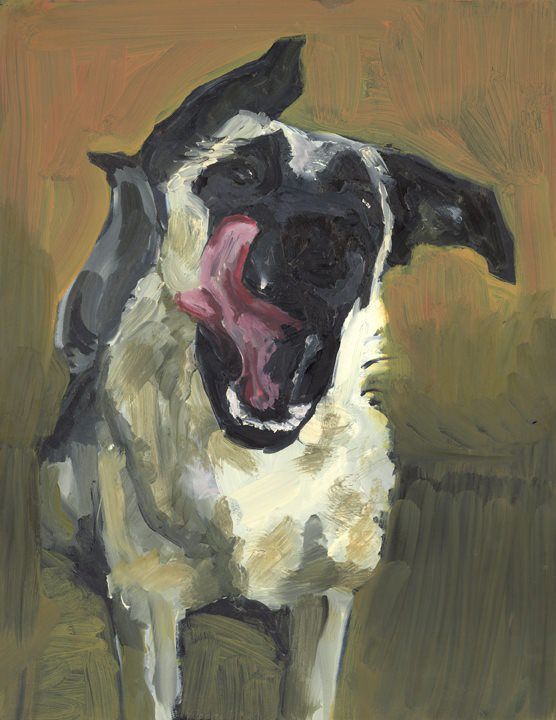 “Encounter,” an installation of two life-sized bronze sculptures—a wolf and a dog—was shown at the 2013 outdoor exhibition at the Helen Day Art Center in Stowe, VT. Artist and HeARTs Speak member Colleen Rudolf sought to capture the moment when two genetically related animals, one domestic—one wild, met. Colleen asked the evolutionary question, “Would they still be able to communicate?”
“Encounter,” an installation of two life-sized bronze sculptures—a wolf and a dog—was shown at the 2013 outdoor exhibition at the Helen Day Art Center in Stowe, VT. Artist and HeARTs Speak member Colleen Rudolf sought to capture the moment when two genetically related animals, one domestic—one wild, met. Colleen asked the evolutionary question, “Would they still be able to communicate?”
 Colleen is an accomplished multi-media artist. She earned her B.S. from Skidmore College with departmental honors in Fine Art and an M.F.A. from the Pennsylvania Academy of the Fine Arts.
Colleen is an accomplished multi-media artist. She earned her B.S. from Skidmore College with departmental honors in Fine Art and an M.F.A. from the Pennsylvania Academy of the Fine Arts.
She currently works out of her studio in Philadelphia, dividing her time between her business, Portraits By Colleen, and her fine art projects. Dooey and Robinson, her two rescue dogs, wait by her side.
I asked Colleen, “Which came first—art or dogs?” Like many of us, she wanted a dog as a child. Her parents brought home stuffed animals and books instead.
This turned out to be serendipity for the artist in making. “I was intrigued by the illustrations in books like Angelina Ballerina and the Chis Van Allsburg’s stories,” she said. “I read Beatrix Potter, Tintin, Calvin and Hobbes. The illustrations made deep impressions on my memory.”
Colleen creates one-of-a-kind portraits. Through Portraits By Colleen, she also operates an Etsy store. Using images on select merchandise of animals she drew through her Shelter Dog Project, she raises awareness of the plight of shelter dogs and donates ten percent of sales to Street Tails Animal Rescue in Philadelphia. Through Portraits By Colleen, she supports the locally made movement. All items are sourced and constructed as close to her Philadelphia studio as possible.
Recently, Colleen answered questions about her work as an artist.
 In your animal portraits, what do you look for when you start drawing? What features individualize each subject?
In your animal portraits, what do you look for when you start drawing? What features individualize each subject?
Nature has a way of designing graceful forms. A portrait is more than just a study in anatomy, as there is a soul, a spirit, something beyond the physical body that I am attempting to describe. Obviously, features and where they fall in the skull varies from individual to individual. But it is also how these features are held, where the muscle tension is, that can tell a broader story, where emotion starts to enter into the face, or in the animal, the body.
I am fascinated by communication in all species, and I spent time studying human emotions and how facial expressions communicate across cultures and languages. Dogs have their own expressive language, too. I pay attention to that.
I see nonhuman animals as innocents, never deceptive about their intention. I look for and attempt to describe a peaceful and harmonious instant. I find the dogs I work with at the shelter inspiring. Take the pressure off, and they meet you right there in that moment. They have taught me how to be calm, to accept this world.
Tell us about your portraits and why clients chose this medium?
 I work with both charcoal and graphite (pencil), although I have a slight preference in this moment for graphite. Graphite has a sheen to it, reminiscent of steel, and I find that seductive.
I work with both charcoal and graphite (pencil), although I have a slight preference in this moment for graphite. Graphite has a sheen to it, reminiscent of steel, and I find that seductive.
A drawing is as revealing about the hand of the artist as it is the subject. I love an energetic, unpredictable line. To me, the evidence of a hand, something that is affected by fatigue, spikes in adrenaline, anxiety, and compassion, is endlessly fascinating. It is something a machine can’t simulate (although I think IBM is working on it). For me, this hands-on approach is very important. It provides the access where I can identify with the maker.
I also think that in a time when machines have become so dominant in our culture, human variation and sensitivity brings a counterpoint that I find refreshing and exciting. When someone hires me to draw, they are selecting me for my unique hand.
In addition to Portraits By Colleen, you are a fine artist who shows in galleries and exhibitions. Do these two focuses blend, or do you find one pulls you away from the other?
 Portraits By Colleen grew out of a desire to earn a living. The work I make as Colleen Rudolf doesn’t have those same commercial investments, so I am freer. Of course, they feed each other. But I put on a different cap when I’m thinking as Portraits By Colleen, i.e. initial investment, retail, market, profit. With commission work, you collaborate with the client. I’ve learned to be clearer up front. I’ve learned to steer away from clients who hire me as a mere extension of them. It is a fine line to walk, because I do like to collaborate, but I also need to have the strength to know that what I do is unique, and I am the only one who will defend this.
Portraits By Colleen grew out of a desire to earn a living. The work I make as Colleen Rudolf doesn’t have those same commercial investments, so I am freer. Of course, they feed each other. But I put on a different cap when I’m thinking as Portraits By Colleen, i.e. initial investment, retail, market, profit. With commission work, you collaborate with the client. I’ve learned to be clearer up front. I’ve learned to steer away from clients who hire me as a mere extension of them. It is a fine line to walk, because I do like to collaborate, but I also need to have the strength to know that what I do is unique, and I am the only one who will defend this.
I love horses and working with my dogs and dogs that I meet at the shelter. When it’s going well, the horse (or dogs) and I are working together, voluntarily. There is no force, and this is a beautiful thing. Dancing with people is similar. This is what I strive for in collaborations and my work with clients. It should feel more like a dance than a march. Funny enough, it should be similar when I’m working just for myself. It should also be a dance with moments where you are just carried away.
Working through Portraits By Colleen reinforces discipline, and I definitely draw upon and try to bring those same qualities to the practice of independent work. And sometimes, Portraits By Colleen dominates my studio time. But again, it’s like a dance, a little backward and forwards all the time.
In “Encounter,” your bronze sculptures of Wolf and Dog, work both figuratively and conceptually. Can you talk a little about the thoughts and ideas you wanted to evoke with this installation?
This was an exciting piece because it is a simple gesture. What would happen if I placed a wolf and dog together? The two are very close genetically, but we all know they are worlds apart. Because of my research into communication, I wondered if there would be enough intact in the dog for it to be able to negotiate an interaction with a wolf. That was the beginning of this piece. It allowed me room to explore body language and how tension can be represented in the body and musculature. It also raised questions about evolution and our notion of what it means to evolve.
During the making of this piece, I learned more details of what is currently happening with wolves. I began to think more about how humans manage other species and how we affect balances. A great book on the subject is The Myth of Progress by Tom Wessels. My volunteer work at my local city-contracted animal shelter also indicates a tragic phenomenon with dog population numbers. Humans are spending record amounts on their pets, yet we still euthanize thousands each year in the US. It’s curious how humans are selective about their altruistic tendencies. Save the homeless dog but poison the pigeon, rat, ants, mice, etc.
“Encounter” was a huge and expensive project. Did you find working in large-scale bronze challenging? Would you do it again?
 It was a huge and expensive project. I am still humbled and appreciative of the help I received through Kickstarter. The piece is still for sale, and as a result of the financial support I received from supporters, I am not in debt, but there was still six months of work that I didn’t get paid for, and I’m still working to finish some rewards for donors.
It was a huge and expensive project. I am still humbled and appreciative of the help I received through Kickstarter. The piece is still for sale, and as a result of the financial support I received from supporters, I am not in debt, but there was still six months of work that I didn’t get paid for, and I’m still working to finish some rewards for donors.
I’ve had experience working in bronze, and I worked with great people. That makes a big difference. Working in bronze means everything is heavier. I have to ask for help in order to do anything! But there is a great lesson in this: people coming together can make anything happen. I would do it again, although I would prefer to work in a studio designed for large-scale modeling instead of in my rowhouse. But you do what it takes, right? As for the scale shift, I loved it. When the piece is larger, you have more space to move, to affect the topography of the surface.
You funded the project using Kickstarter. How was that experience? Why do you feel you were so successful? Any advice for other artists considering this avenue?
Kickstarter is pretty simple and straightforward. You have to promote—a lot, which can be challenging for some. I shared via my newsletter and Facebook network. In the end, it came down to personal connections. When someone contributes to your project, it is really a powerful gesture. I am lucky to have crossed paths with so many generous and kind people.
You recently took up trapeze flying. Risk. How does risk figure into your artistic work?
Fly School Circus Arts opened a rig minutes from my house, and I went. I love it. Everyone should try this at least once in their lives no matter what their age!
The first time I jumped off the 25-foot platform, I was very nervous, my stomach filled with butterflies, and I probably wasn’t breathing. But this is what fear does, it causes us to stagnate. It is a powerful thing. Overcoming the fear was an amazing feeling and empowering. Since then, I have improved and learned several new tricks. I spent several classes on one trick, a pullover chute, which I had difficulty with, but I kept trying, and finally, I caught it.
I draw on that experience in the studio. When I am having a bad day or something isn’t going the way I had hoped, I don’t give up. I just take a break. Then I keep trying. Again and again. Trapeze has reinforced this practice. So it seems less about risk as much as it is about facing fears and self-improvement.

